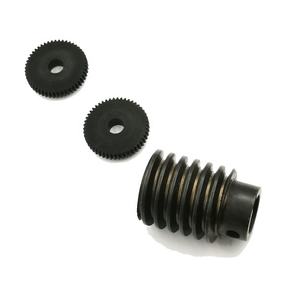An outboard motor gearbox, often referred to as the lower unit or gearcase, is a critical component responsible for transmitting engine power to the propeller while providing essential gear reduction and directional control. Its efficient operation directly impacts the performance, fuel economy, and maneuverability of the vessel. Understanding its function requires an examination of its core components and the mechanical principles governing power transfer.
(how a outboard motor gearbox works)
The gearbox houses several key elements within a watertight aluminum or magnesium alloy housing. The primary components include the drive shaft, pinion gear, forward gear, reverse gear, clutch dog, shift mechanism, and propeller shaft. The drive shaft extends vertically from the engine crankshaft, rotating at high speed. At its lower end, the drive shaft engages with a pinion gear, which is typically a small bevel gear. This pinion gear meshes with two larger bevel gears: the forward gear and the reverse gear. These gears are mounted on the horizontal propeller shaft but are not fixed to it; instead, they rotate freely on bearings around the propeller shaft. The clutch dog, a sliding splined component mounted directly on the propeller shaft, acts as the engagement mechanism. It can be shifted axially to lock into either the forward or reverse gear via internal teeth.
Power transmission begins when the engine rotates the vertical drive shaft. The pinion gear rotates with the drive shaft, driving both the forward and reverse gears simultaneously in opposite directions. However, without engagement of the clutch dog, these gears simply spin idly around the stationary propeller shaft. When the operator selects a gear via the shift lever (linked mechanically or electronically to the shift mechanism inside the gearbox), a shift rod or cam moves the clutch dog along the propeller shaft. Engaging the clutch dog with the forward gear locks it to the propeller shaft, causing the shaft to rotate in the direction of the forward gear. Conversely, engaging with the reverse gear locks it to the propeller shaft but induces opposite rotation due to the reverse gear’s counter-meshing with the pinion. Neutral is achieved when the clutch dog is centered and disengaged from both gears, allowing free rotation without propeller drive.
Gear reduction is fundamental to this system. Engine RPM is typically too high for efficient propeller thrust generation. The pinion gear, being smaller than the forward and reverse gears, creates a reduction ratio (commonly between 1.5:1 to 2.5:1). This reduces propeller shaft RPM while multiplying torque, optimizing thrust and preventing propeller cavitation. The precise ratio is engineered to match engine power characteristics and vessel requirements.
Lubrication is vital for durability. The gearcase is filled with specialized marine gear oil, which lubricates gears, bearings, and the clutch dog interface. An oil pump (driven by the propeller shaft or drive shaft) often circulates oil, while seals prevent water ingress and oil leakage. Cooling occurs indirectly via the surrounding water, which absorbs heat from the housing. Some designs incorporate water passages for additional cooling.
The shift mechanism must provide positive, reliable engagement to prevent clutch dog “jumping” under load, which causes gear clash and premature wear. Modern systems use precise detents or hydraulic assistance for smooth operation. The entire assembly is engineered for minimal friction, corrosion resistance, and structural integrity to withstand propeller thrust loads and impacts.
(how a outboard motor gearbox works)
In summary, the outboard gearbox functions as a robust, sealed reduction gear system. It converts high-speed engine rotation into usable propeller thrust through controlled bevel gear engagement, enables directional changes via a sliding clutch, and ensures longevity through dedicated lubrication. This mechanical orchestration is indispensable for translating engine power into controlled marine propulsion.


